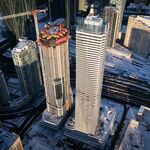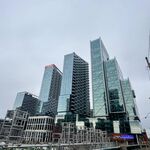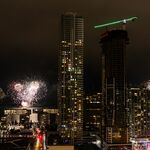Rainforest
Senior Member
The stop spacing should be tailored to the role of each route. A city of Toronto size needs several trunk, high capacity subway routes, that help people get across the city faster. They cannot be fully substituted by GO trains, because in many cases there is no rail line in the right place and going in the desired direction. I don't know any modern city of Toronto size that functions well without having several of such trunk routes.
For the trunk routes, like Line 1 and 2, Sheppard subway, future OL, 1-km spacing is a good rule of thumb, with a parallel local bus. Tighter spacing in the downtown core is expected because the big destinations are close to each other.
The next tier should be mid-capacity LRT / BRT routes, such as Finch, Steeles, Jane etc. For those, 500-700 m spacing seems reasonable, parallel local bus is not needed. I think the same goes for the ordinary suburban bus routes that have no dedicated lanes.
For the downtown streetcars, even when they run in dedicated lanes like Spadina, 300-500 m spacing is reasonable, because the destinations are placed close to each other and every stop is well used.
For the trunk routes, like Line 1 and 2, Sheppard subway, future OL, 1-km spacing is a good rule of thumb, with a parallel local bus. Tighter spacing in the downtown core is expected because the big destinations are close to each other.
The next tier should be mid-capacity LRT / BRT routes, such as Finch, Steeles, Jane etc. For those, 500-700 m spacing seems reasonable, parallel local bus is not needed. I think the same goes for the ordinary suburban bus routes that have no dedicated lanes.
For the downtown streetcars, even when they run in dedicated lanes like Spadina, 300-500 m spacing is reasonable, because the destinations are placed close to each other and every stop is well used.




